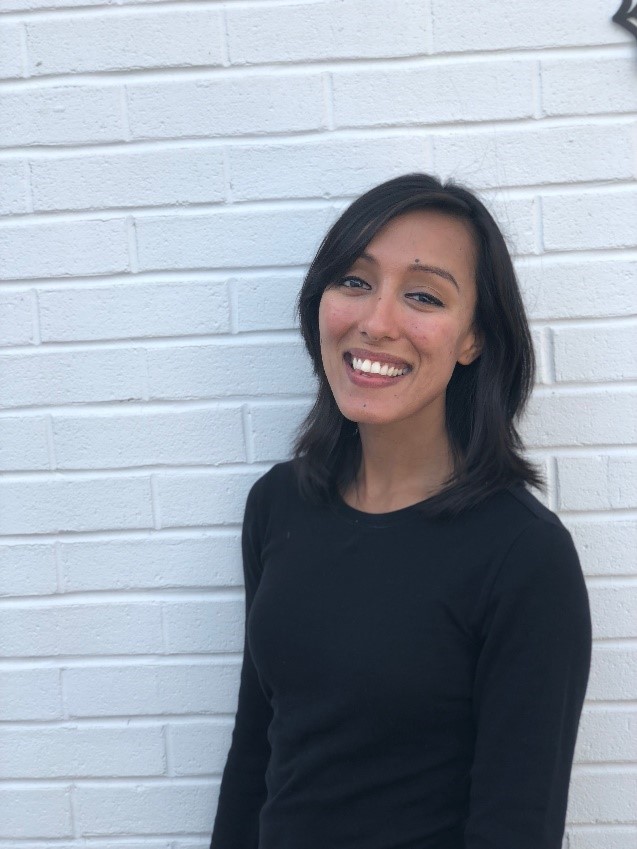by Sitasma Khatri

It’s 5:20 a.m. It’s still dark and I’m blearily approaching the turn for the Rockingham County Fairgrounds. As I make my turn, I’m surprised to find a line of cars waiting to enter the parking lots. There are shadows of volunteers milling about everywhere. It’s clear that most of the people have already been here for a while. This was when I began to realize the sheer scale of a Remote Area Medical clinic.
Remote Area Medical is a non-profit organization that provides free medical, dental and vision care to anyone who needs it. You do not need to present any form of government I.D. or documentation. The organization travels all over the United States, as well as internationally, to provide healthcare to underserved populations. What’s incredible is that all the clinics are primarily volunteer run!
As I parked my car and headed towards the volunteer station, I was met with another line. This was the volunteer check-in line that extended from inside the building all the way to the parking lots. By this time, it was 5:30 a.m. and there was already an efficient system, run by volunteers, of matching other volunteers to their appropriate destinations. Through chatting with some of the other people in line, I was told that most people got here around 4:00 a.m. to start volunteering!
I was assigned to help in the main building as a general support/interpreter. In the building, there were so many people preparing to open up the clinic doors at 6:00 a.m. On one side, it was a sea of light blue as scrubbed up dentists, dental hygienists, and dental students readied their stations for the day’s patients. On the other side, there were physicians, medical students, nurses, nursing students and medical assistants having last-minute meetings to make sure everyone understood their roles. In addition, pre-medical students, pre-nursing students, and a whole host of other individuals waited in their respective areas to help out where they could.
Once the doors opened, patients began filing in systematically. I knew that they had been waiting for hours, but did not know how long until a patient later told me that many people had arrived the night before and slept in their cars. The first station they went to was the patient registration table. Here, volunteers created forms for the patients with basic demographic information such as name and age. Next, patients moved on to the triaging tables where healthcare professionals (mostly nurses and nursing students) took the history of the patient as well as checked vital signs such as temperature and blood pressure. In addition, patients had to choose between receiving dental or vision care in addition to medical care. Due to time constraints, they were unable to receive both the same day.
After fluttering around for a while, trying to see where I could be useful, I fell into the responsibility of escorting patients from various stations. A triage table would hold up a red card when the patient was ready to move on and I would guide the patient to their next destination. From this experience, I got to hear short stories about their lives and why they chose to come here. For many, this was not their first RAM clinic. Several patients had driven over three hours to be seen by a healthcare professional. I remember one patient shared how this was the only way she could see a doctor because health insurance was too expensive. Another patient had brought her whole family to be seen here and had traveled further to other RAM clinics as well. These conversations emphasized both the gaps in where and how healthcare is currently being delivered along with the vital need to fill those regions with more healthcare services so that patients do not have to drive hours and then wait all night to be seen.
One quality that was woven into every activity and interaction at the RAM clinic was the sincere desire to help. Some volunteers had also driven hours to participate in this clinic. There was a group of pre-med students from Ohio that drove six hours to volunteer all three days at the clinic. In addition, volunteers were handing out 3-pound bags of fresh Virginian apples from a local orchard. I was told that the orchard’s owner frequently donated his produce because he wanted to take care of his community. There were also booths of community resource organizations staffed with representatives to assist patients and make them aware of the opportunities within the area.
Overall, this experience at the RAM clinic truly revealed the power of the human spirit when like-minded individuals work together. I was made aware of how deeply people can care for one another. Also, through this opportunity, I realized that it takes a number of different individuals from varied backgrounds to execute such a massive operation. Certainly, there must be trained healthcare professionals, but it is also important to have people ready to help out wherever there is a non-medical need – volunteers willing to bring coffee to patients waiting in the cold or escorting patients to various stations. I feel grateful to have had even the tiniest role in improving access to healthcare in an area of need.